33 Expert-Backed Decluttering Tips to Keep You Organized for Life
We talked to professional organizers for tips on how you can declutter your life and keep it that way.

The sheer prospect of getting organized can be absolutely overwhelming—especially if you live in a home with overcrowded bedrooms, overflowing kitchen cabinets, and boxes labeled "Holiday" that are actually filled with soccer balls. We get it, editing down your life is easier said than done. But decluttering can make you feel better mentally, physically, and emotionally. Trust us, it's absolutely worth it.
To help you get started on your decluttering journey, we spoke to organization professionals who have seen it all. These experts shared their favorite words of wisdom to help demystify decluttering once and for all, so you can truly tackle tidying up with the confidence of Marie Kondo. A cleaner, clutter-free life is just ahead with these expert-backed decluttering tips!
1
Ask more specific questions than "Should I keep this or toss it?"

Laura Kinsella, CEO of Urban Organyze, says there's typically one question we ask when it comes to decluttering: "Should I keep this or toss it?" But you shouldn't feel pigeonholed into using only this question. "While that approach works for some, others feel the panic of a finite answer, which results in postponed decisions, leaving clutter exactly where it is," Kinsella says.
She suggests asking different questions that will help you get out of feeling stuck, like: "Would I buy this item again today?" "Does this item bring up good feelings or bad ones?" "Does this reflect or represent who I am now?" If the answer to most of those questions is "no," you should probably mark the item as clutter.
2
Follow the S.E.E.Y.A. method.

For Katrina Teeple, founder and CEO of Operation Organization, decluttering is all about the S.E.E.Y.A. method, which boils down to these five questions: Is your item S (Sucking your energy?), E (Excessive?), E (Emotionally draining?), Y (You don't love it?), A (An eye sore?). If you answer "yes" to even one of these small questions, you can say "see ya" to it and either throw it away or donate it.
3
Don't start something you can't finish.

"Organized people start and finish tasks as they go whenever possible," Teeple says. If you find yourself getting distracted while decluttering, reframe the way you see your projects. You don't have to do it all in one day. Instead, finish the smaller tasks first and resist doing anything part way. Before you know it, you'll be finishing all the projects you thought you couldn't!
4
Start with the smallest decluttering tasks first.
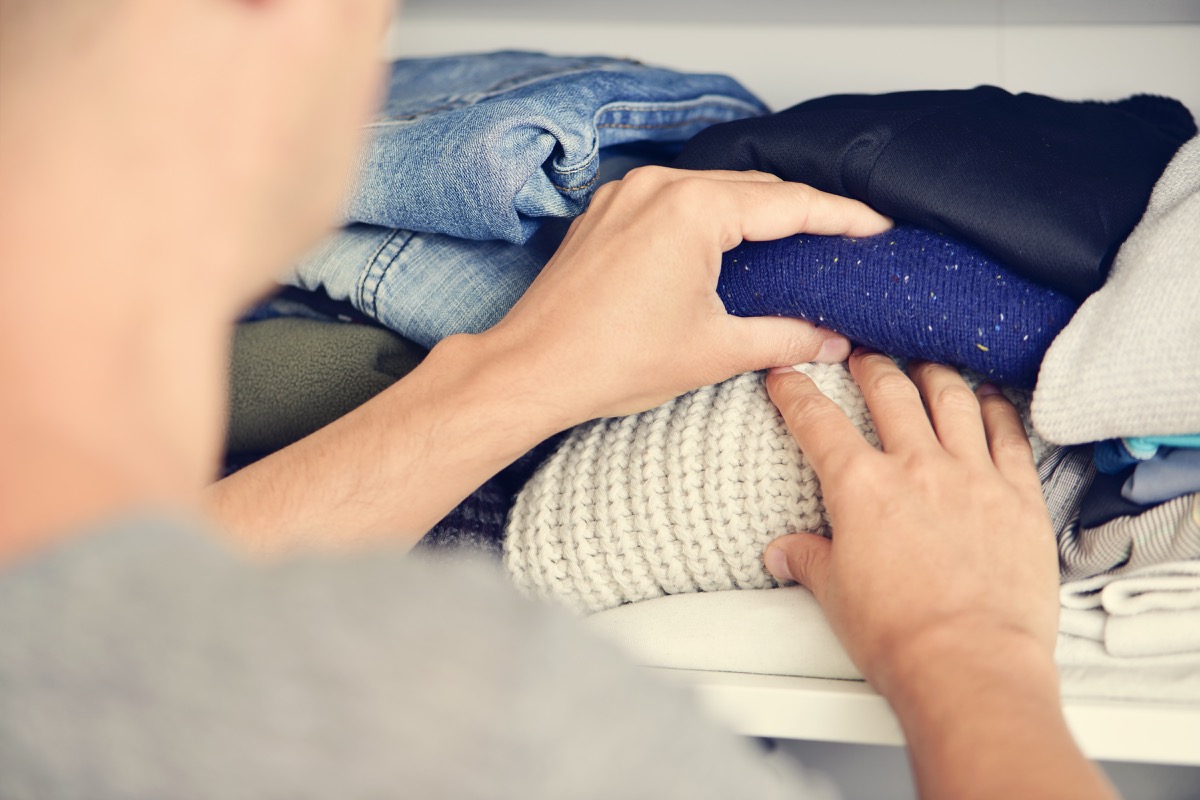
As Teeple noted, with decluttering, it's always best to start with the simpler tasks. "Always do the easiest categories or areas first. Then move on to the next easiest thing, then the next," says Laura Cattano, owner of Organization Design. Besides building momentum in your journey, this method also helps you feel more confident in your editing choices when it gets to the really hard, sentimental objects.
5
Practice the two-minute rule.
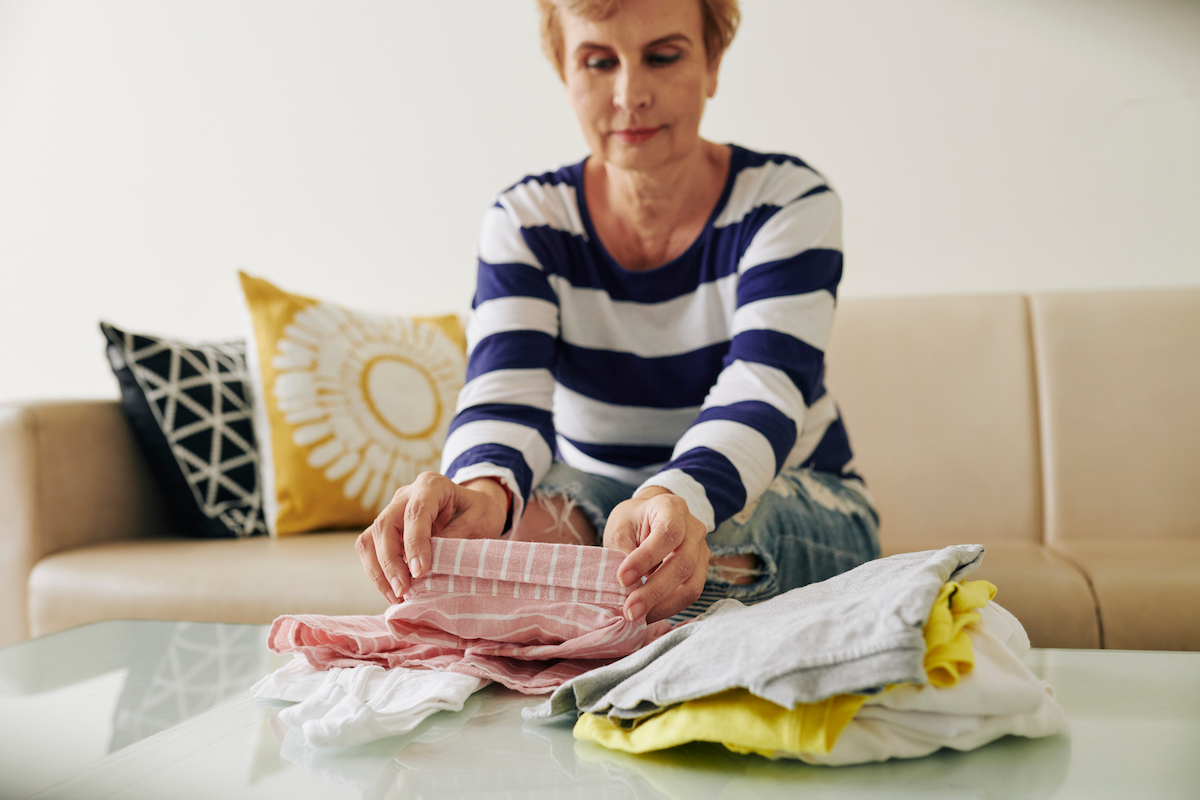
Similarly, April Stratmeyer, communications manager of Pocket Prep, likes to break up her tidying up into smaller blocks. "If something will take less than two minutes to complete, do it, and do it now," she suggests. "While doing it, I remind myself that this is eliminating future duties and stress." Need some examples? This rule works for anything from doing dishes to hanging up clean laundry.
6
Break down your to-do list.
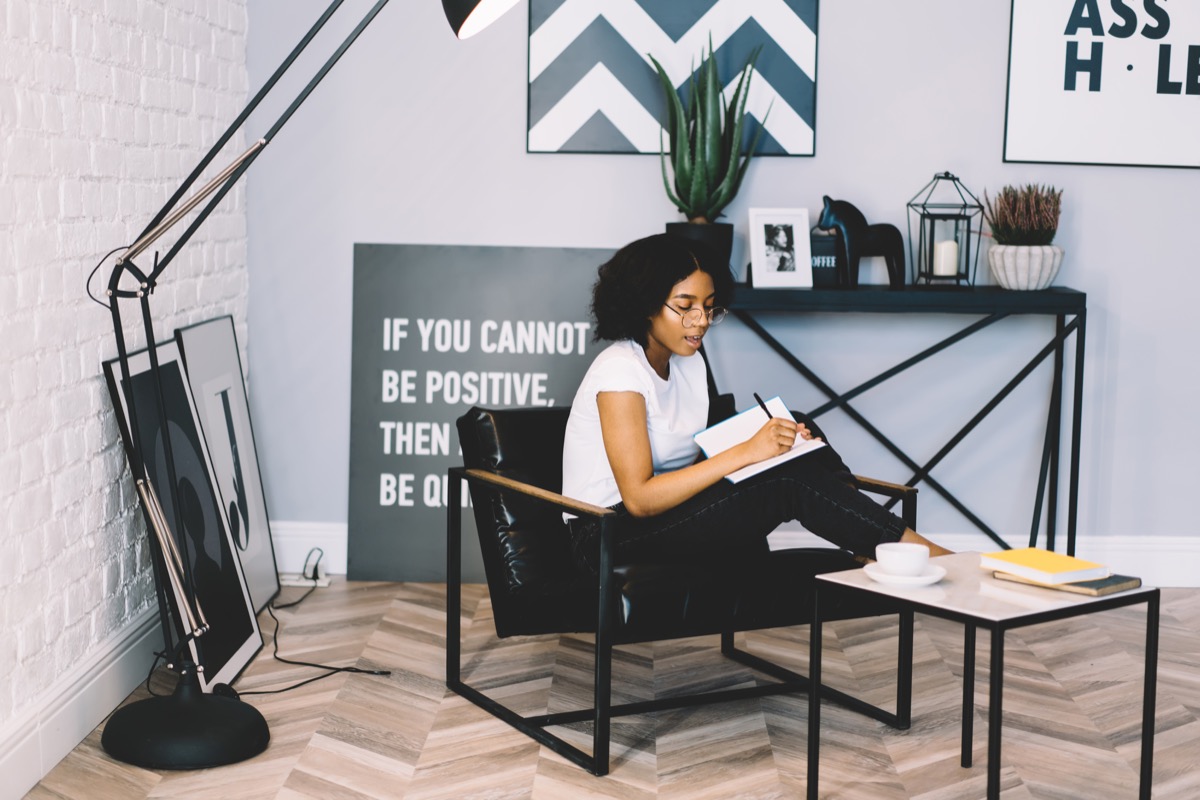
While they do work for some people, to-do lists have a habit of getting out of hand. If you're starting to feel overwhelmed by yours, "break projects down into small sequential steps," says Susie Hayman, owner of InYourBizness and current president of the National Association of Productivity and Organizing Professionals (NAPO). "Use time limits so that you stay on track and always note deadlines." For even more organization, keep a portable digital copy of your to-do list so you can view it or add to it while you're on the go.
7
Don't wait to toss something you know you don't want.

You might not realize it yet, but there is something in your home that you already know you want to toss. So, "get rid of it now," advises Cattano. "You'll be amazed at how the energy of your space changes just by getting those things out, which then gives you a boost to get out even more things." When you look at your donation bags full of outgrown clothing or broken appliances, you'll realize you probably already had the intent of getting rid of them—so now is the time!
8
Make split decluttering decisions.
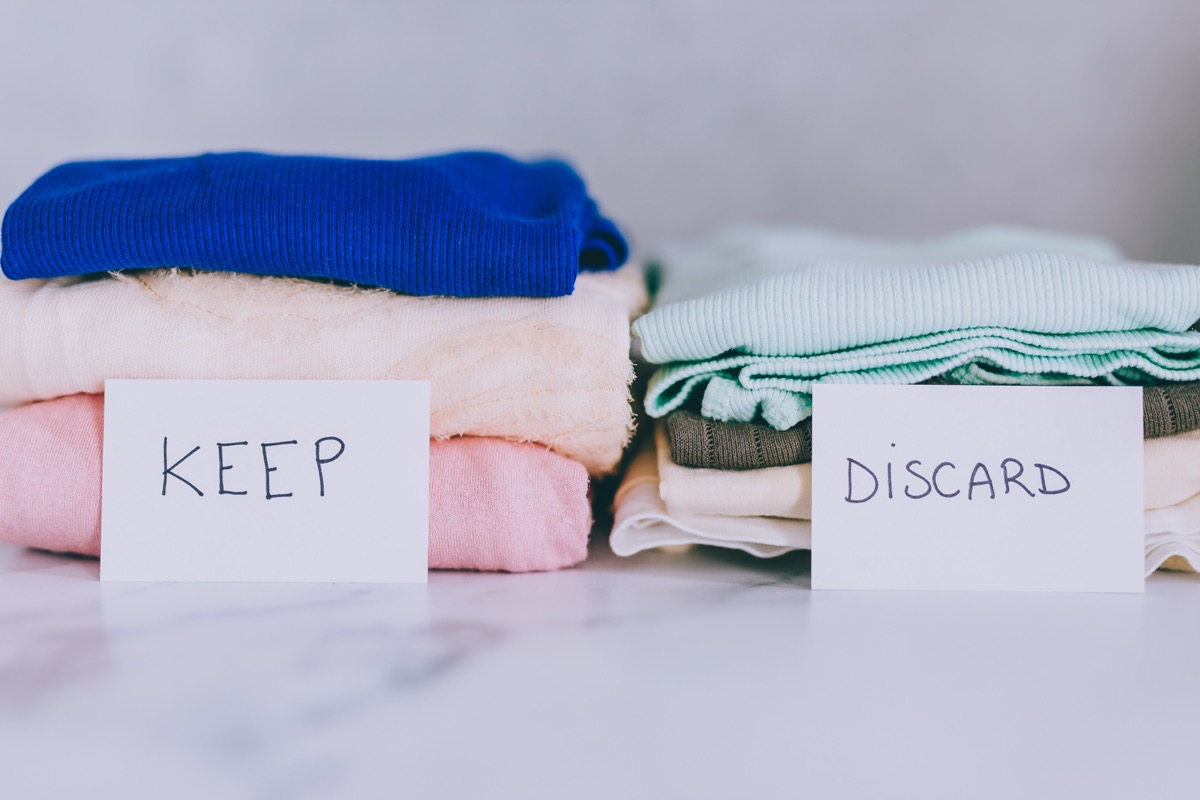
"When editing, don't think too long about anything," Cattano says. That means if something is causing you to doubt yourself, keep it, group it with like objects, and move on. "Some things are easy to look at as an individual item and you know whether to keep or get rid of it, and other things are easier when you look at everything you have in that category," she explains. Once you have everything in categories, take another look at exactly how much you own and your answer will be much clearer.
9
If it's covered in dust, it's time to go.

"If an item is covered in dust, it's typically regarded as something that either no longer has purpose to us, or we've outgrown," Kinsella says. Sometimes, these are the items that have found their way to the back of the closet, like a pair of special occasion shoes. Other times, it's a piece of workout gear that you bought when you were really into pilates that one summer. Whatever the reason, "when we let the items do the talking, it's clear what stays and what needs to go," Kinsella explains.
10
Create a command center by your entryway.

We're willing to bet that you've had those moments when you do a double take on your way out the door. To avoid forgetting daily necessities, "hang a simple medicine cabinet by your entryway and use it to keep sunscreen, bug spray, extra keys, pens and Post-it notes, earbuds, or anything you can think of to get you out the door fast," suggests Ann Dooley, owner of Simple Joy with Ann.
When you have a central location like this by the door, it keeps clutter from piling up around the house and it will make your mornings much smoother, too.
11
Make a mail station.

And if the area near your front door is particularly cluttered with unopened white envelopes, it might be time to create a mail station, too. "Just like email, we need an inbox. Corral all mail to a small tray wherever it naturally tends to pile up the most," Kinsella says. For important mail, like bills and invitations, you might find it necessary to create a filing system.
12
Recycle papers ASAP.

But what do you do with all those papers that are not important? Before papers even enter your home, sort, recycle, and toss them. You can easily do this by keeping a recycling bin next to the main entrance of your home, says Amy Tokos, owner of Freshly Organized and president-elect of NAPO. This way, you can say goodbye to them as soon as you walk through the door. Not only does this work for junk mail, but also random signage and anything you can simply take a picture of on your phone.
13
Digitize receipts.

Constantly finding crumpled up receipts at the bottom of your bag? First, recycle the ones you don't need, like anything from quick snack runs or weekend errands. Minimalism coach Rose Lounsbury suggests keeping any receipts related to taxes, any receipts for big ticket items, or those for possible returns. "If you're struggling to let go, try a scanning app like Scanner Pro to digitize receipts and upload them to Google Drive or Dropbox," she adds.
14
Keep your most helpful documents handy.
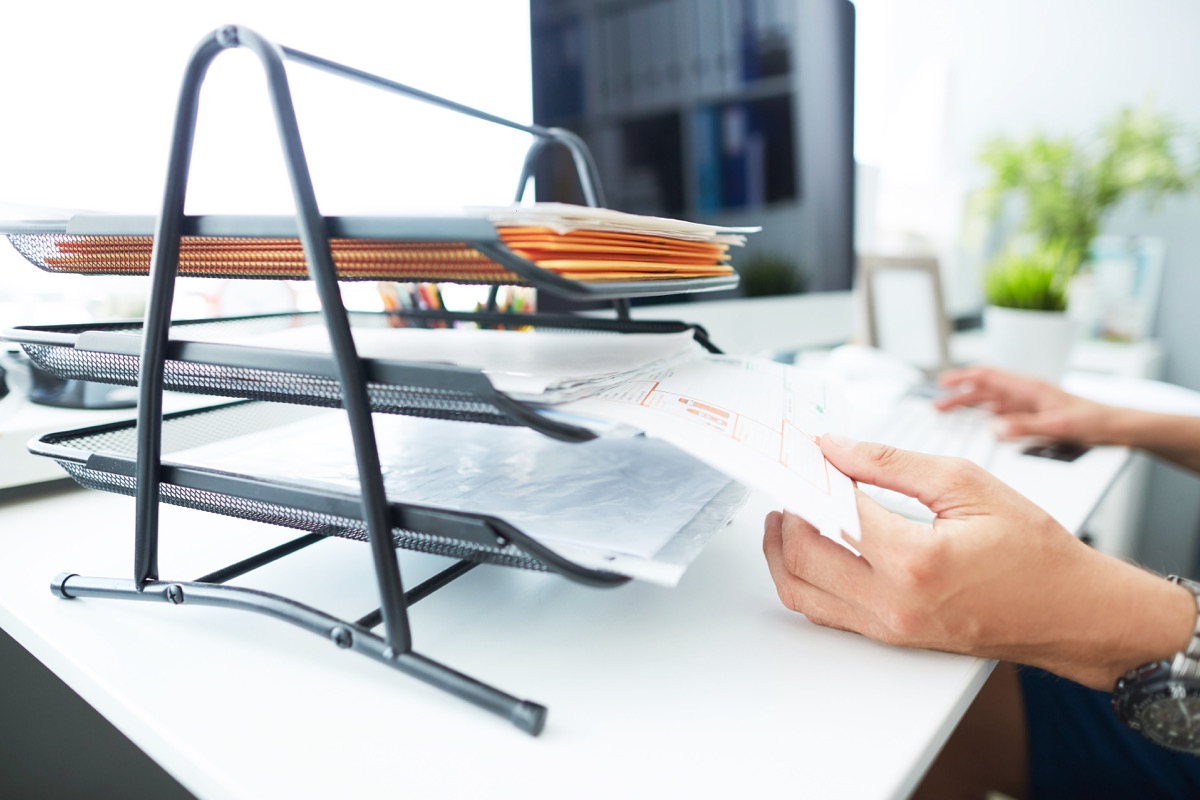
If you find yourself returning to a list, file, or document that's particularly helpful in any aspect of your life, Hayman suggests keeping it handy. "Use desktop file sorters or baskets to organize your files," she says. Or, you can also use your email to preserve your documents in one digital location.
15
Do an electronic detox.

When your computer's "Downloads" folder is an endless scroll of documents and images, it's time for some major digital decluttering. "For those documents and emails you need to keep, create folders, categorized just as you would for a paper file," Hayman suggests. Then, you can move on to the rest of your downloads: Drag them into your digital trash bin, empty it, and let those files float away into the ether.
16
Keep a permanent donation box.

"Having a donation box at the ready makes it oh-so easy to quickly declutter those outgrown sweaters and unloved leggings," says Lounsbury. As soon as your box is full, just empty everything into trash bags and load them into the front seat of your car so you can donate them to a local charity the next time you're running errands.
17
Have a no-buy month.

Sometimes, the easiest way to declutter is to avoid bringing clutter into your home in the first place, which is why Tokos suggests having a no-buy month. During those 30 days, you can buy consumable items, like food, but nothing that can eventually classify itself as junk. According to Tokos, "a pause in items entering your house can give you an opportunity to thin things out."
18
Ditch duplicate utensils.
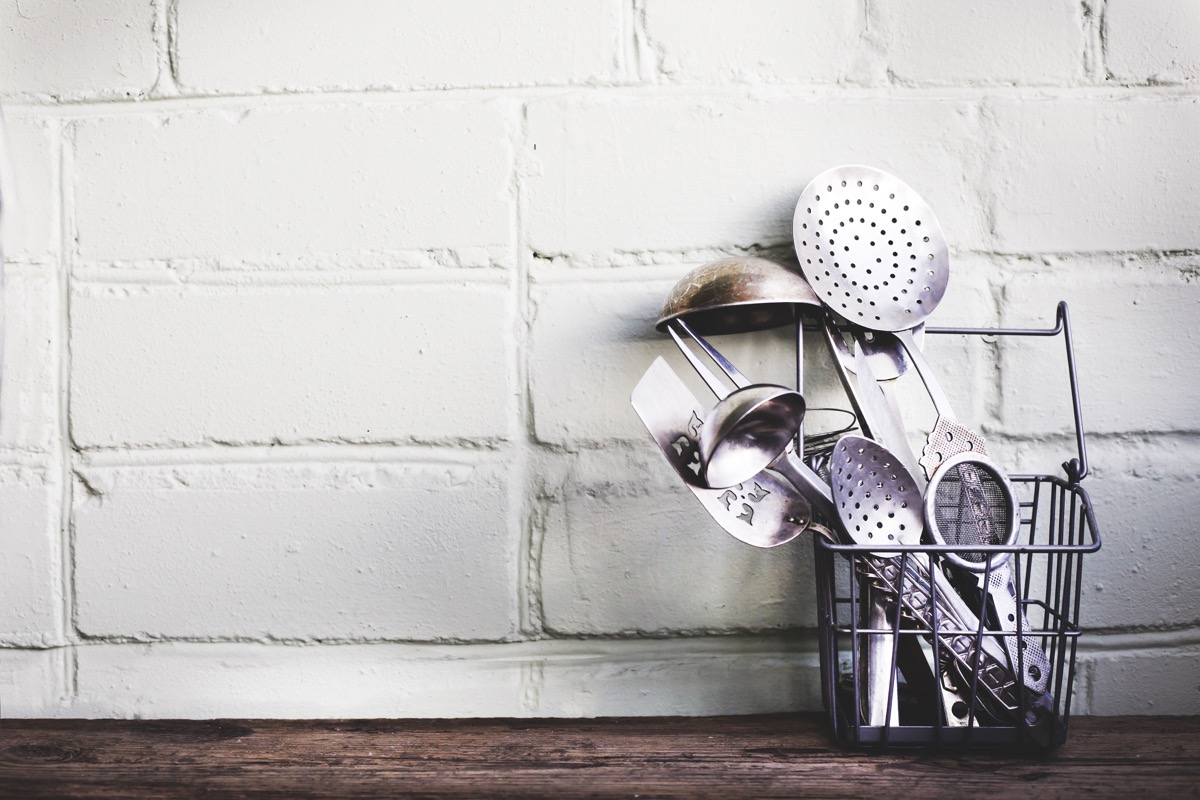
Lousbury says this one is a pillar of living a more minimalist lifestyle. "Not even an octopus needs eight spatulas and 15 wooden spoons," she reasons. Instead, select your absolute favorites—AKA the ones you always tend to use—and remove the rest. After all, fewer utensils lying around in your drawers makes for a much less stressful cooking, baking, and cleaning experience.
19
Hide away spare linens in suitcases.
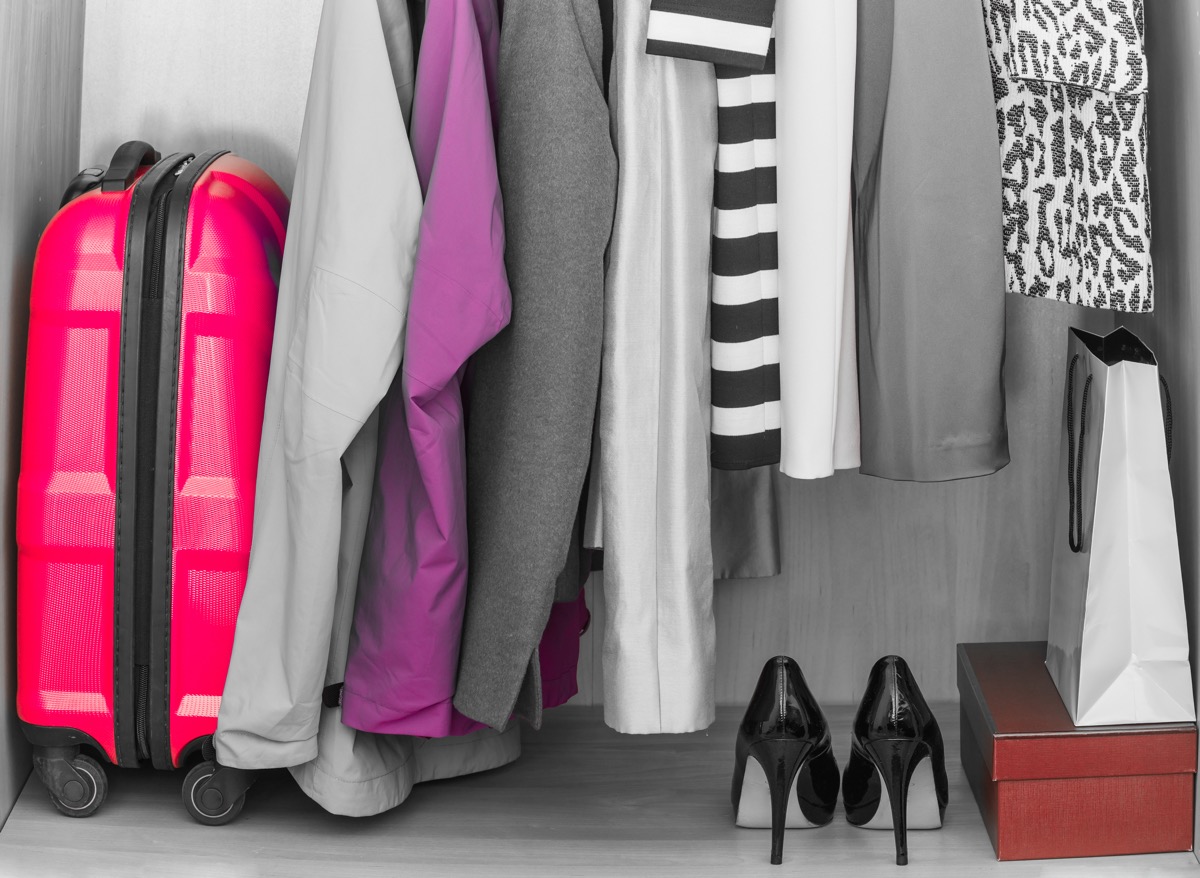
For the kinds of linens you don't use everyday, such as guest pillows or spare comforters, try stowing them in suitcases. "These are lightweight and can be easily removed when you need the suitcases," says Dooley.
As another option, Dooley suggests you use your suitcases for heavy winter parkas and seasonal blankets.
20
Invest in reusable or multipurpose items.
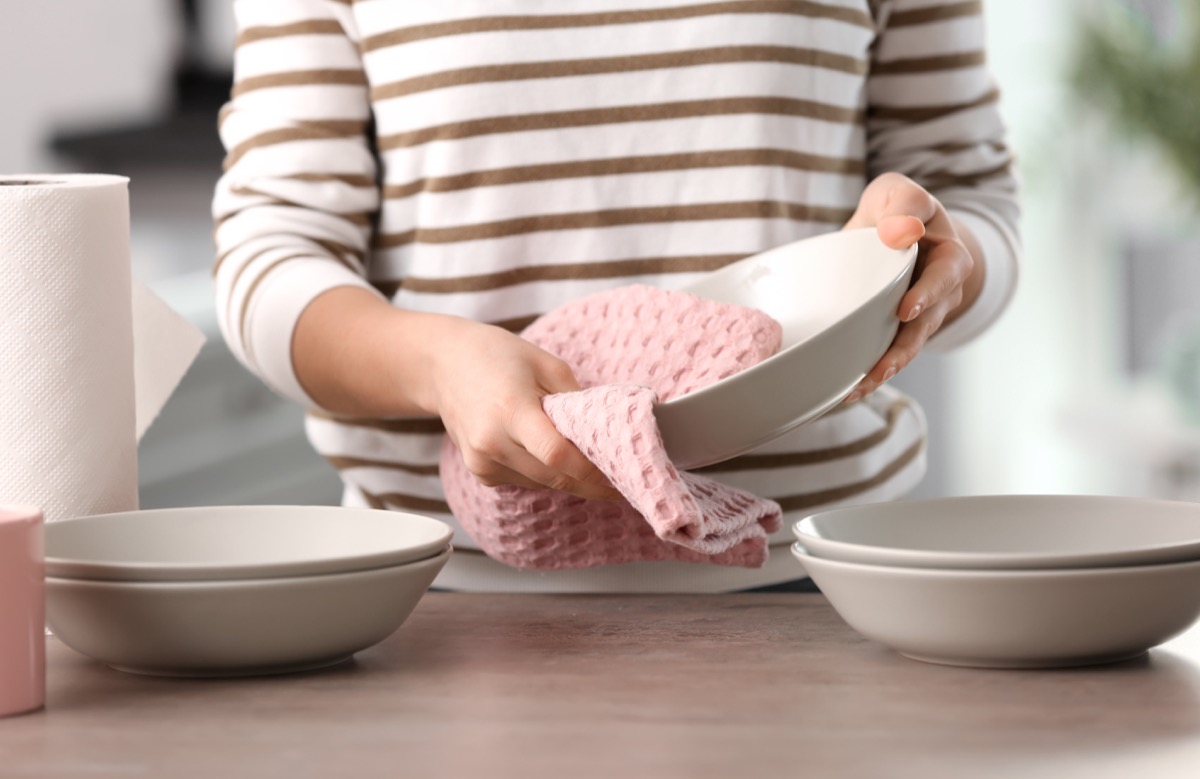
Some items take up way more space than they need to—or you may not even need them at all! For instance, Dooley suggests: "Use kitchen towels and cleaning cloths instead of paper towels, switch to an all-in-one shampoo and body bar soap, and use a nesting bowl set with lids that can be used for eating, mixing, storing, and serving."
21
Keep your trash bags in your trash can.
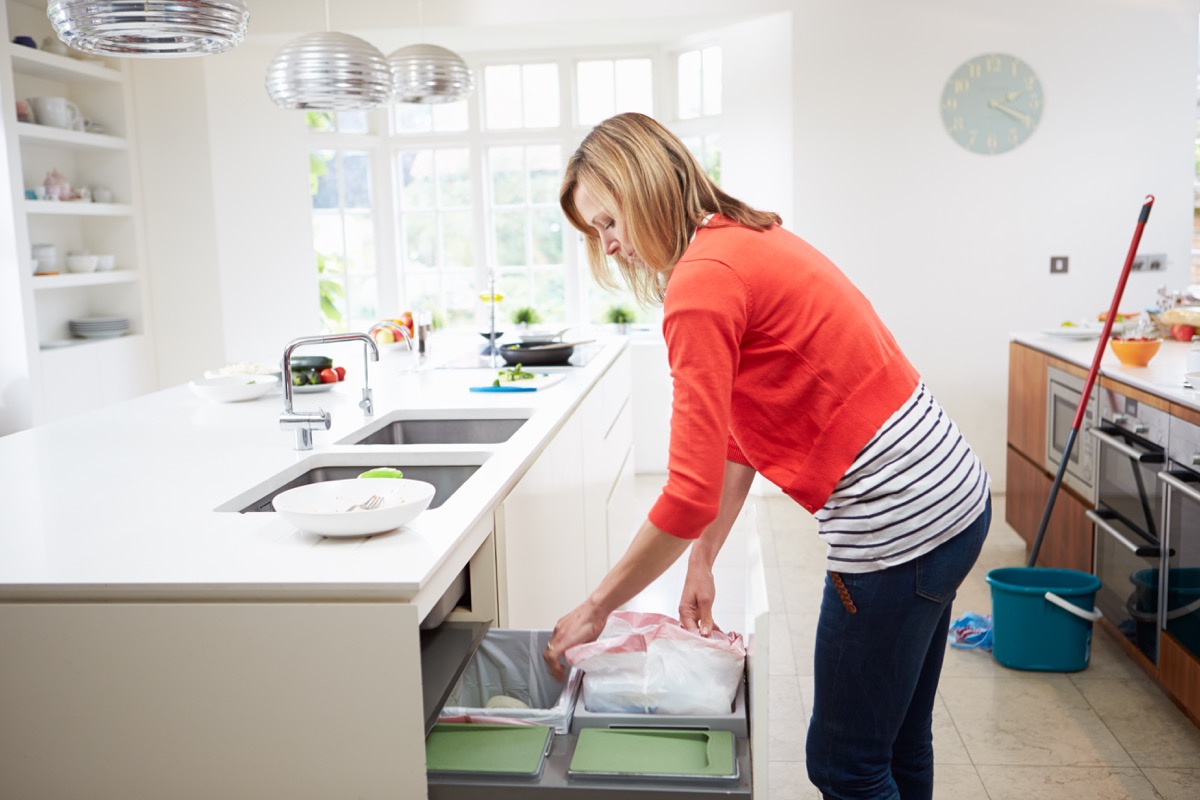
Your trash cans are probably the least of your decluttering worries, but they are ripe with opportunity. "I always recommend people take the trash bags out of the boxes and keep the bags at the bottom of the trash can," Dooley says. This way, you always know that a new trash liner is in close reach when you empty the trash. Saving time + saving space = a win for everyone!
22
Put collapsible bins in the trunk of your car.
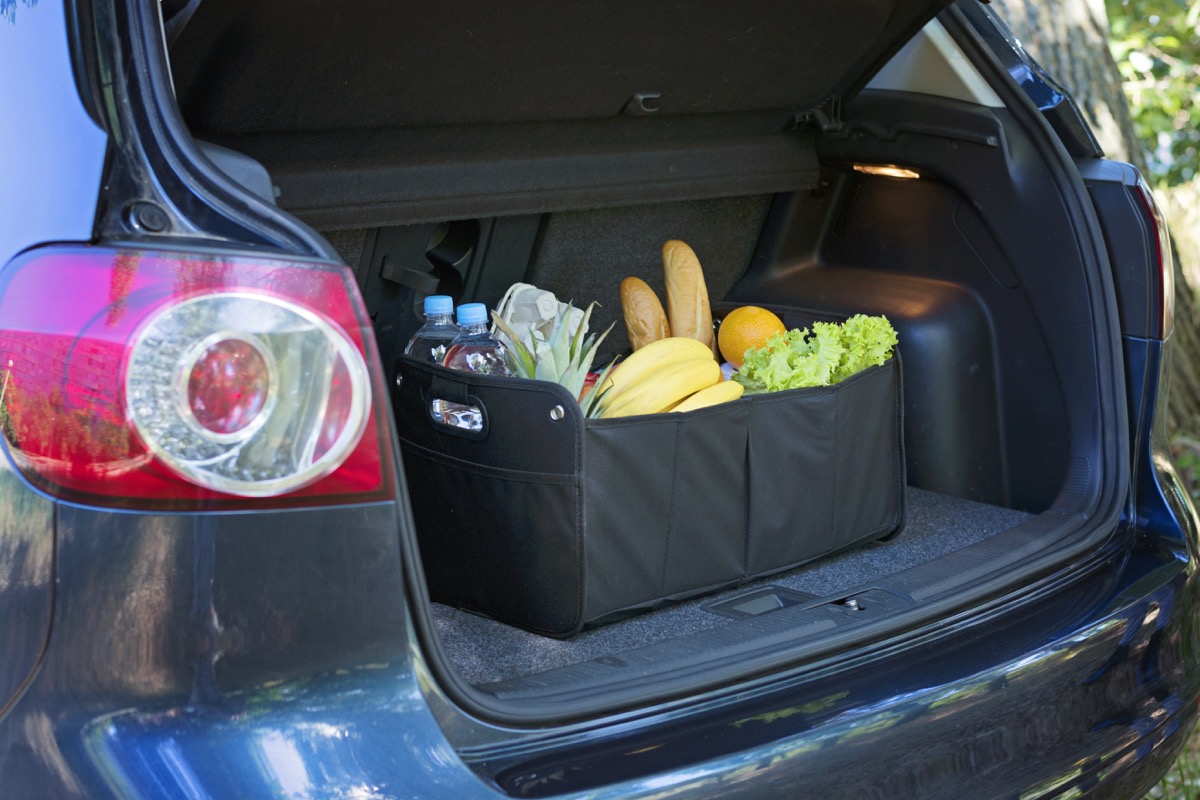
Your car is essentially an extension of your home, but that doesn't mean you should keep it filled with everything you could ever possibly need. Just keep the bare essentials in collapsible bins in your trunk. "You can designate one for items that need to go back in the house, and one for outgoing such as a return or package to mail," Dooley says. You can also repurpose an old shoe box to keep reusable grocery bags!
23
Hang your long clothes to the left of your closet and your short ones to the right.
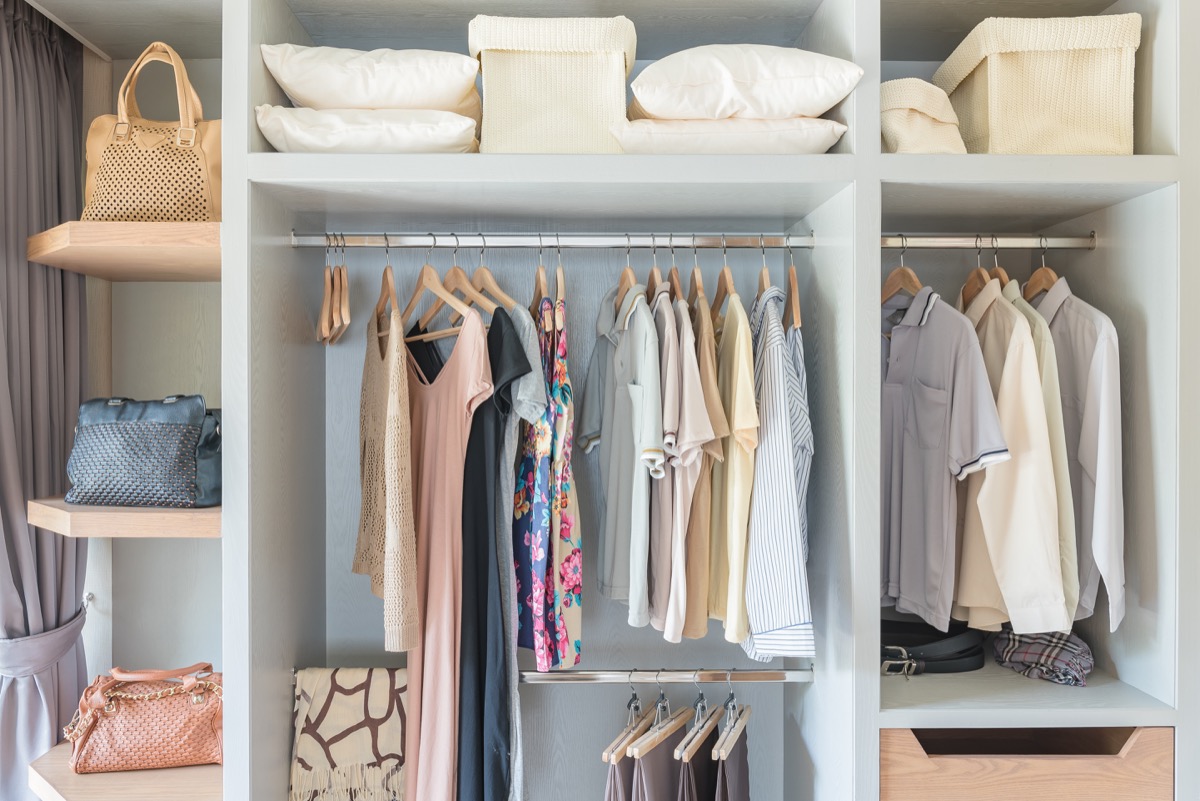
If you're a fan of the KonMari method of decluttering, you might be familiar with this one, which Dooley says is especially important when it comes to keeping a closet decluttered. "Hang your clothes with the longest on the left and shortest on the right," she explains. According to Kondo, this helps you feel more positive.
As for that spare space you create below the clothing on the right side? "Add a small three-drawer dresser or tiered shoe rack to maximize that open space. Or use small cubbies to store bags and purses," Dooley suggests.
24
Say goodbye to single socks.

Your sock drawer is probably filled with errant single socks missing their mates. Chances are high you're not even using them, so there's no reason to hold onto them. "You'll feel a weight lifted if you bite the bullet and chuck single socks. They're only taking valuable space in your drawers and causing a mess," says professional organizer Tova Weinstock.
25
Get rid of uninspiring photos.
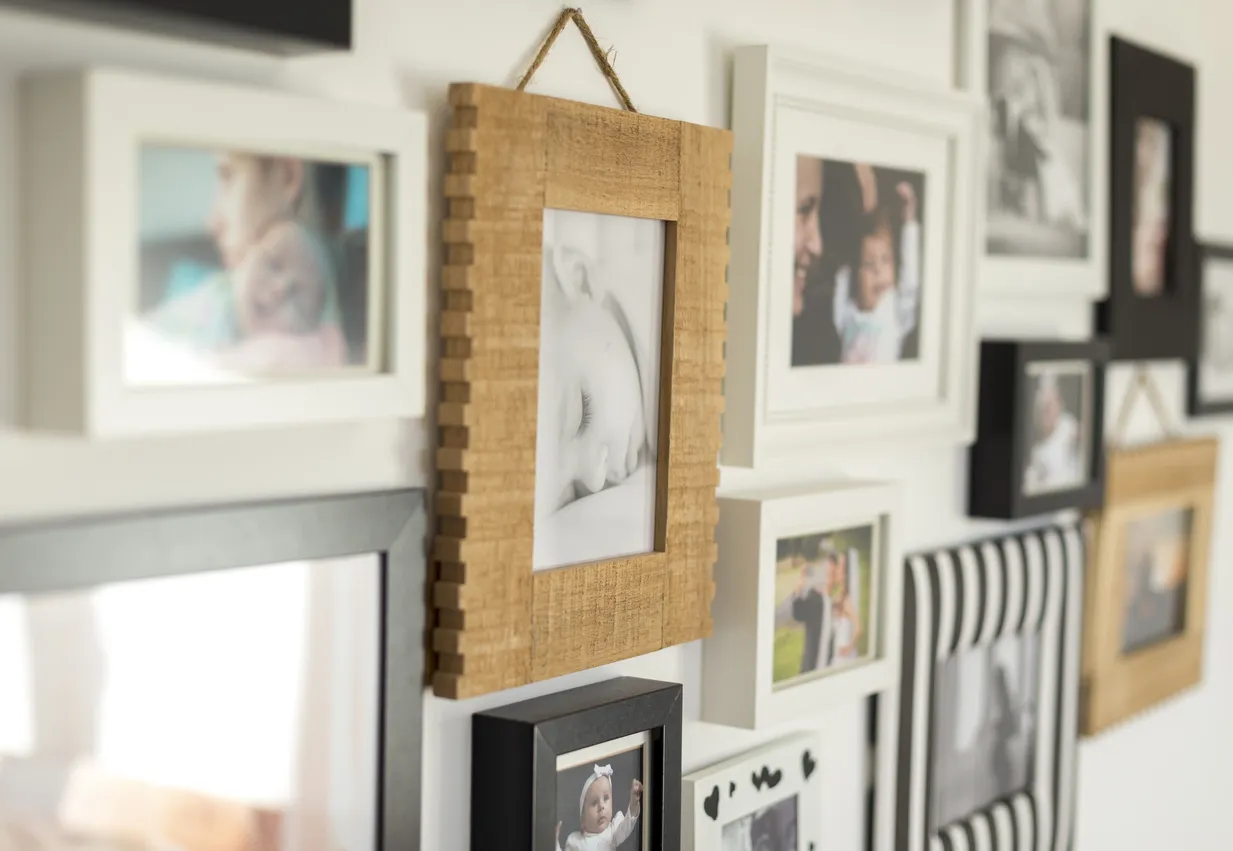
If you're holding onto old, blurry prints that don't hold any sentimental value, Weinstock says it's time to get rid of them. "People get mad at me for this one, but I think old photos should be thrown away," she explains.
Still resisting? Try scanning and uploading them to a digital album and then get rid of the less sentimental ones. "It can be refreshing to condense six old albums into four with the photos that you actually like," Weinstock says.
26
Eliminate "just-in-case" hardware.
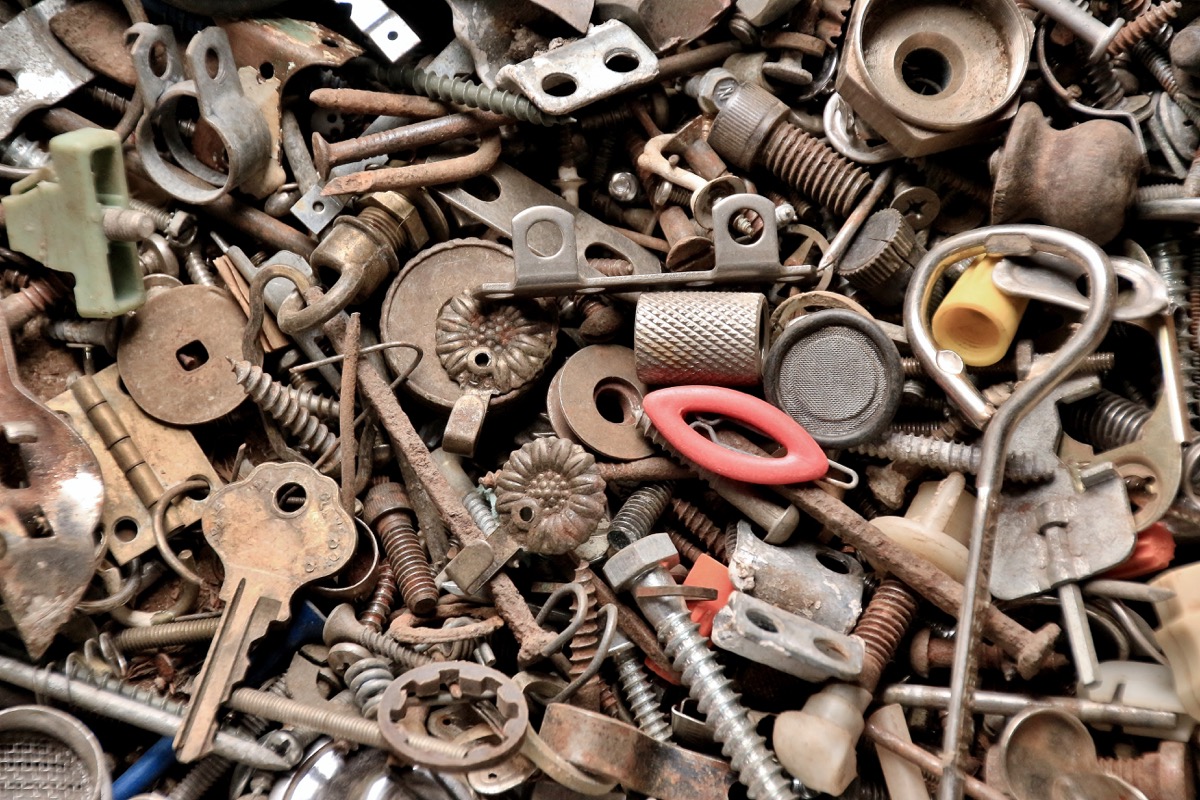
"That extra screw and installation instructions that came with the dresser you built five years ago? It's safe to let those go," Weinstock says. If you have a build-up of old manuals—which you can easily find online—and loose hardware that came with your self-assembled furniture, the safe bet is to let them go. In the rare case that you'll actually need those pieces in the future, you can always find replacements. Some furniture stores even offer replacement hardware for free!
27
Create zones in garages, mudrooms, and playrooms.

Liz Jenkins, owner of Fresh Space, says that the key to a clean and clutter-free garage is to zone off areas based on your needs. "For example, if you've got kids in sports, create a sport zone to hold balls, bats, bags, and other gear," she says. You can also create zones for gardening, cleaning, and woodworking. But this tip works for more than just garages—try integrating the method into other areas of your home, like the mudroom and playroom.
28
Label everything.

Ah labels, the oldest and trustiest organization device. To keep everything extremely clear, Jenkins suggests using oversized labels. "This means you can see things at a distance, even if the lighting isn't great," she says. This is a great tip for decluttering areas like basements and garages that get inundated with the most junk.
29
Don't ignore under-the-bed storage.
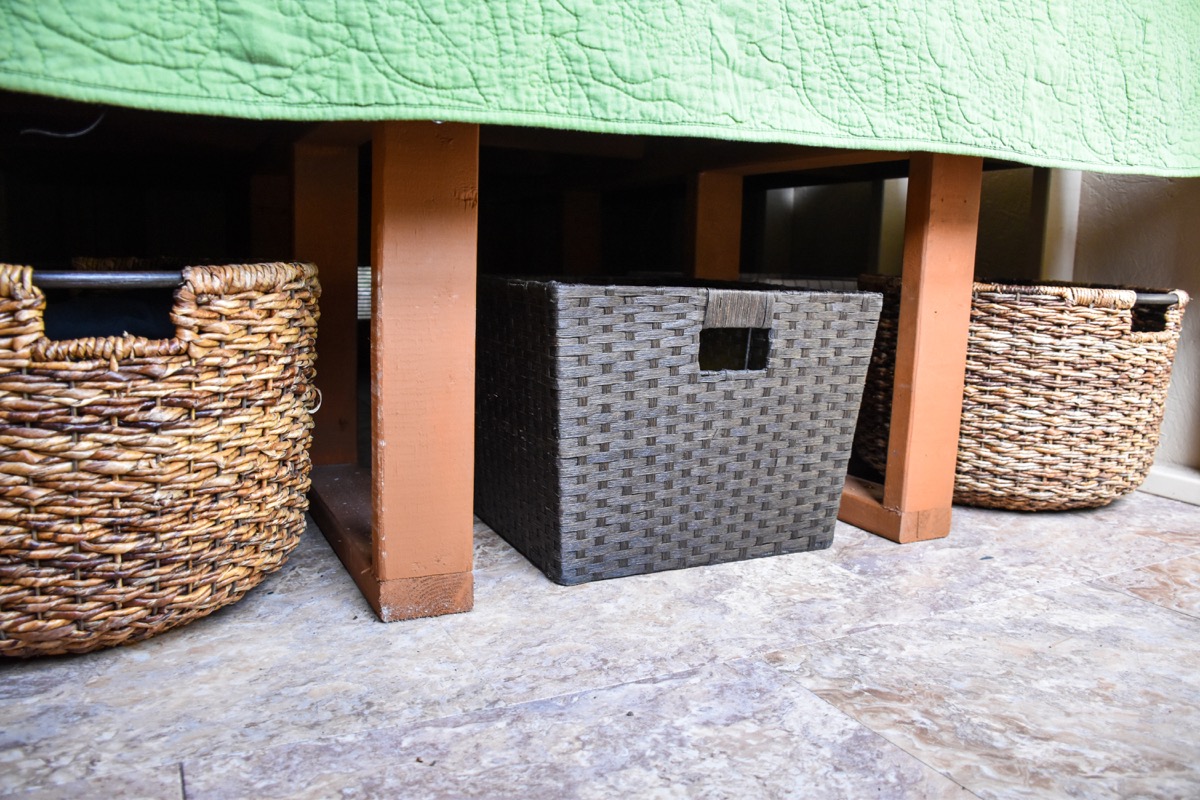
Even the cleanest people probably have a thing or two stashed underneath the bed. It's an easy place to store the items we don't need everyday. But according to Cattano, this could do more harm than good. "So many people have sleeping issues, and I think having dusty stuff is not helping," she says. To clean this area out, use a dust rag or paper towel and some cleaning spray. Pull out and wipe down everything from under the bed and go through it all before putting those boxes back.
30
Ask friends for help.

Decluttering doesn't have to be a solo venture. Personal life coach Christine Hassler actually recommends making it an activity with a friend. "Everyone has a friend who's really good at organizing who's not emotionally attached to your things," she says. Your friend will be more willing to let go of items that you're not sure of, plus your closest friends will be able to note the things they've seen you wear or use.
31
Practice the 30-day rule.
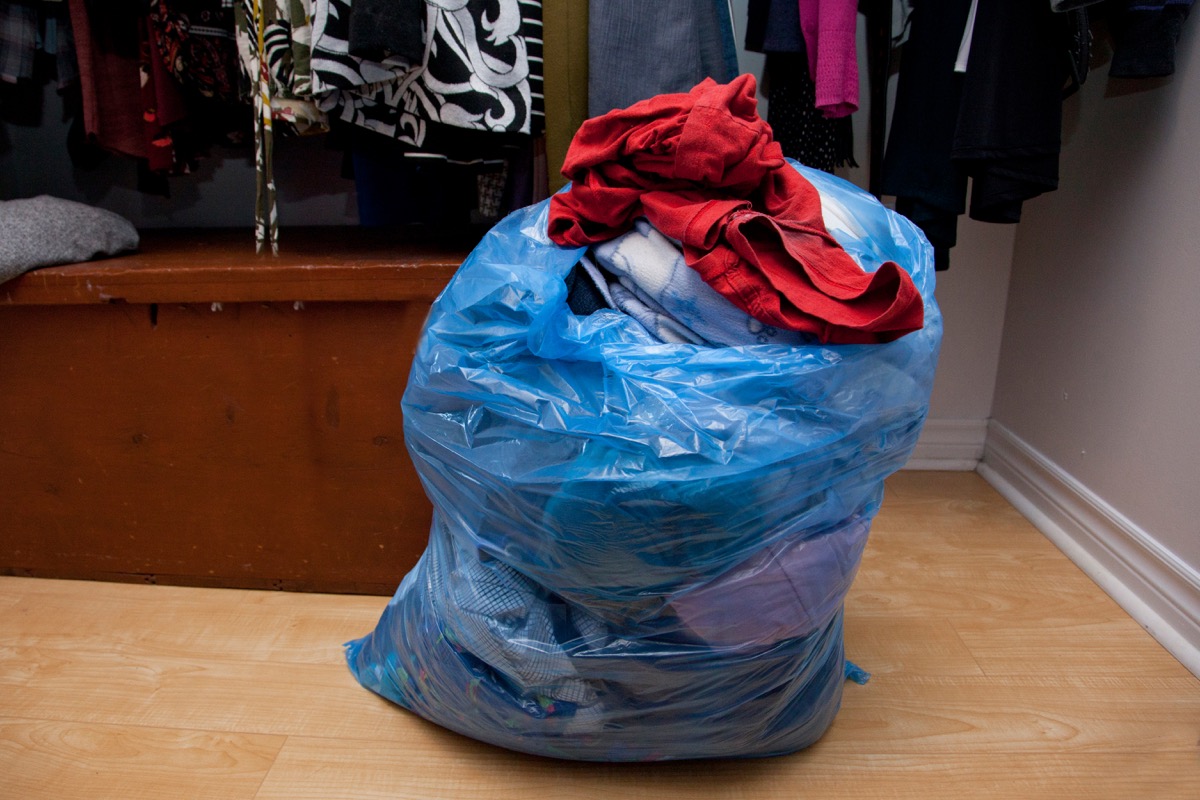
The rule is, if you haven't looked at it or thought about it in 30 days, get rid of it. The one exception? Seasonal items. "You don't need to throw away your winter clothes in the summer because you haven't worn them for 30 days. Focus on those summer clothes and think back to what you really didn't wear in the winter," Hassler says.
Additionally, she suggests looking at expiration dates on items—such as food in your pantry, cosmetics or medication in your medicine cabinet, and the dates on old magazines—which are key guidelines in the art of letting go.
32
Ditch the junk drawer.
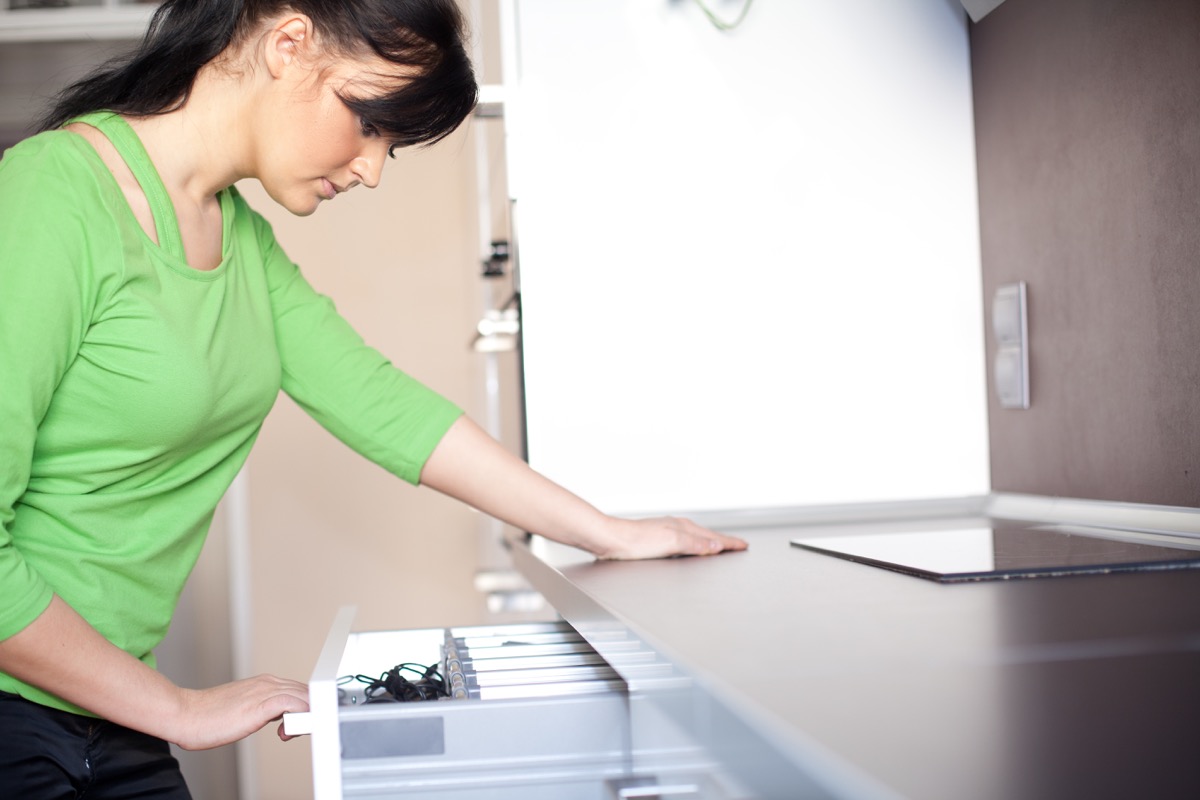
We all have that one drawer. And whether you directly label it as your junk drawer or not, you can likely live without it. "A really bold move is not even to look at it and throw it away," Hassler says.
Even if you aren't quite ready to do that, remove everything from your junk drawer and only put back the things you know you use every week, like scissors or nail files.
33
Live like you travel.
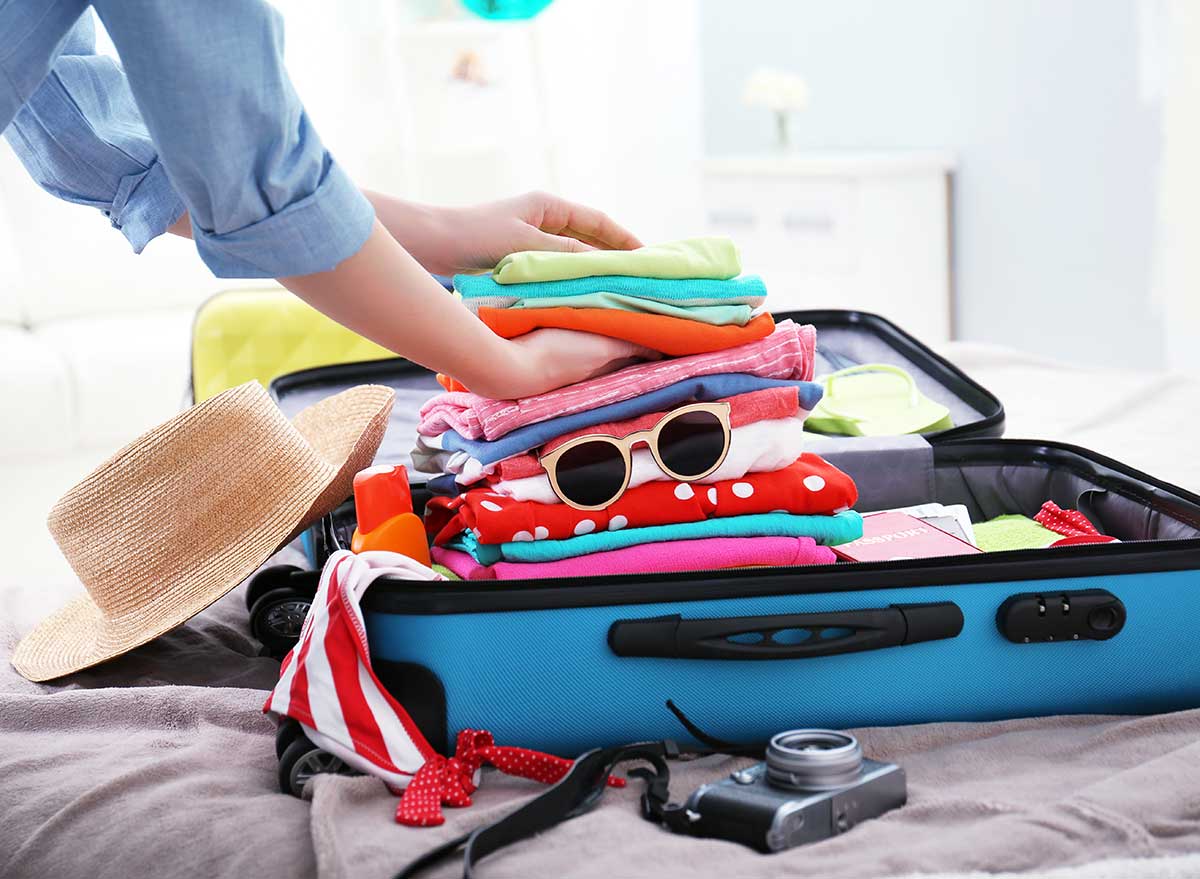
When you're vacationing, you probably only bring the essentials. And Hassler says this is the best way to think about what you need and what you don't need at home, too. "On the next trip, really look at what you use on a daily basis. The things you didn't bring when you traveled, you really didn't need them," she says. So, into the donation bin or garbage they go!
Additional reporting by Adam Bible





















